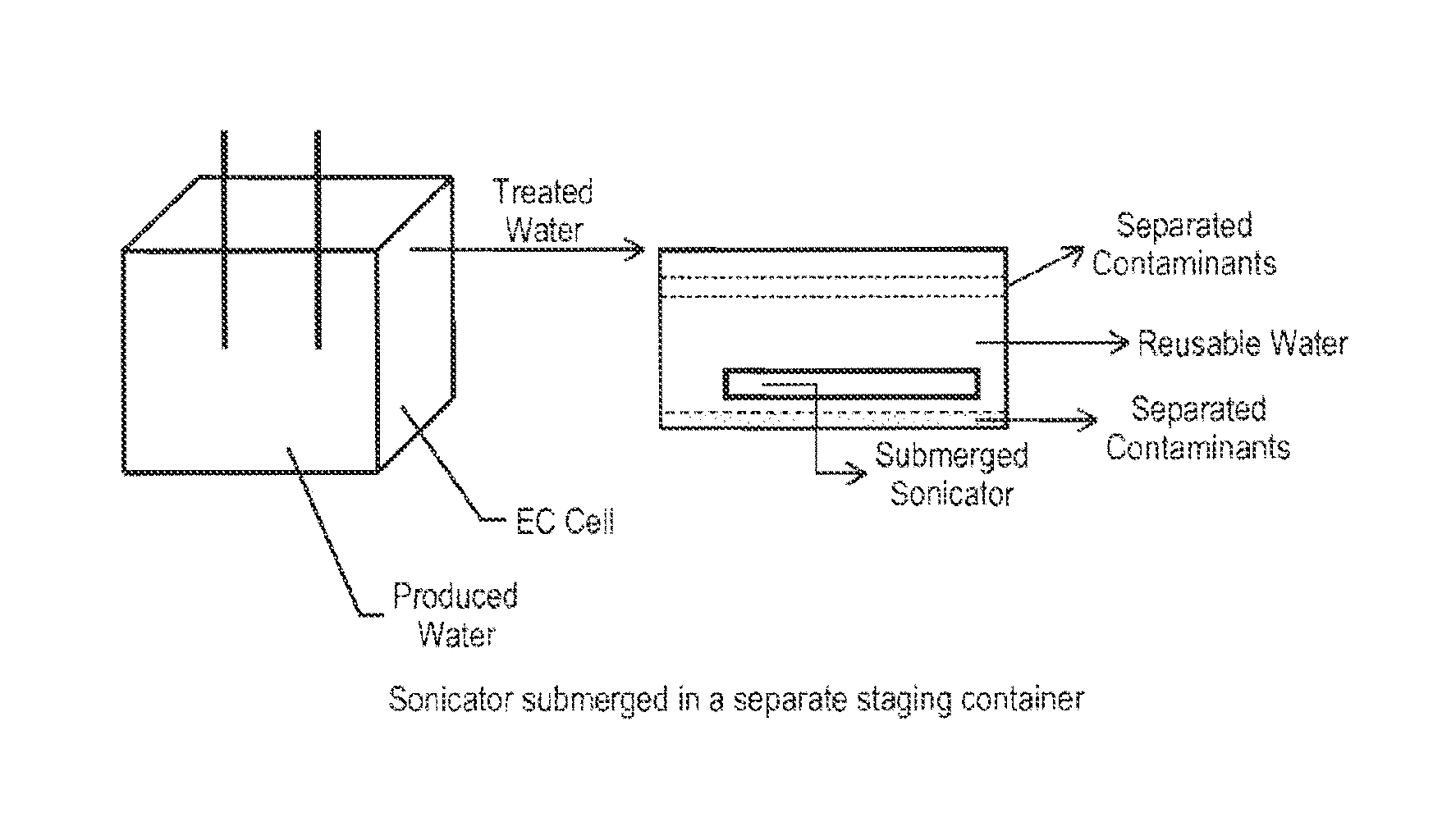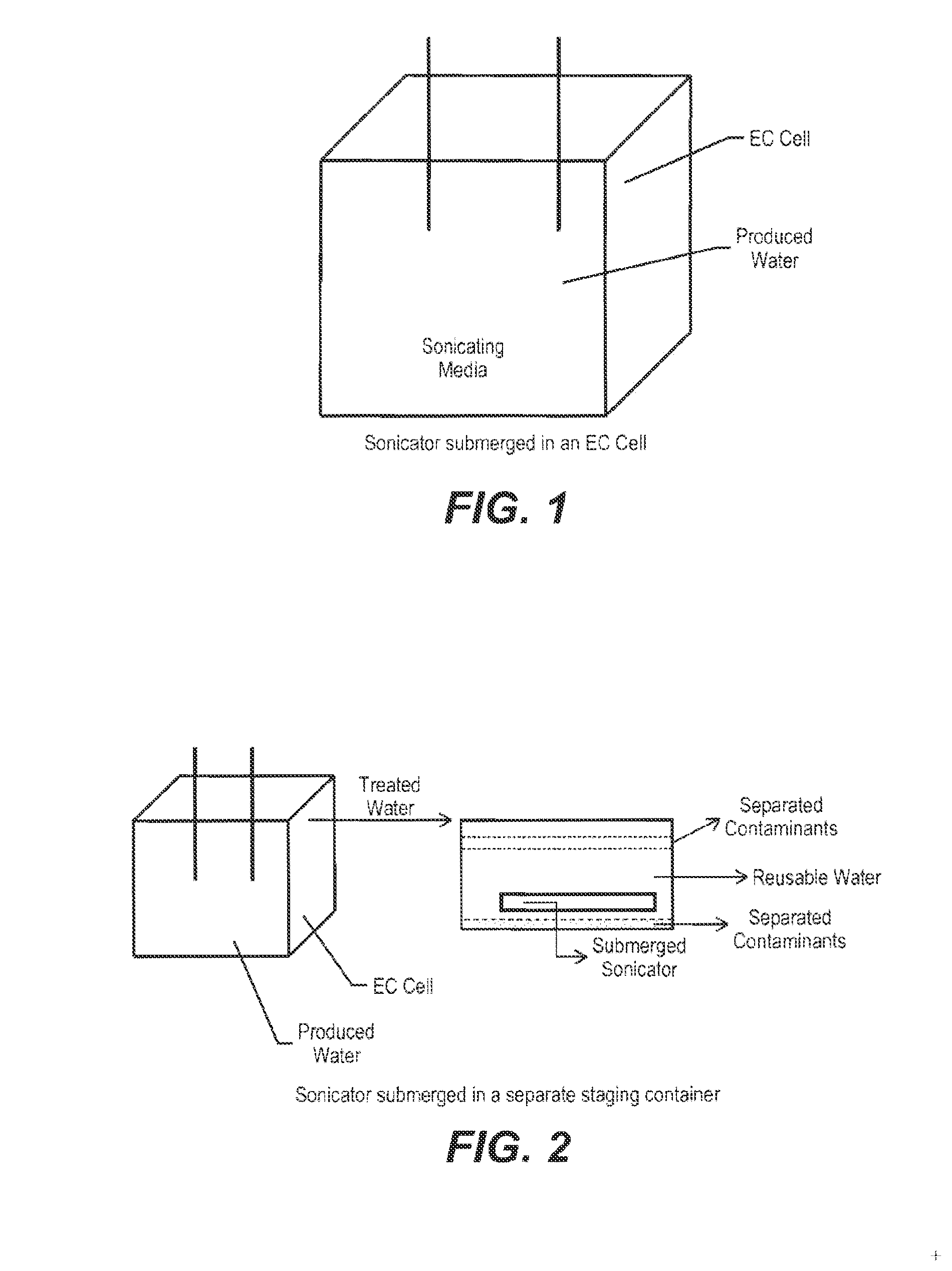Method for Water Treatment Coupling Electrocoagulation and Sonic Energy
- Summary
- Abstract
- Description
- Claims
- Application Information
AI Technical Summary
Benefits of technology
Problems solved by technology
Method used
Image
Examples
Embodiment Construction
[0021]Produced water is processed by the combination of electrocoagulation and sonic energy. Untreated produced water contains fine suspended particulates. While electrocoagulation, by itself, increases the particle size of the particulates, the combination of electrocoagulation and sonic energy facilitates the removal of particulates by rendering a top layer of lighter solids and / or a bottom layer of heavy solids.
[0022]By subjecting produced water to electrocoagulation and ultrasonic waves, the retention time is decreased. Typically, the retention time, upon the integration of electrocoagulation and sonic energy, is between from about 1 to about 5 hours.
[0023]The term “retention time” as used herein refers to the amount of time that produced water is subjected to treatment until the start of flocculation of undesirable chemicals.
[0024]As used herein, the term “produced water” shall refer to both water generated during an oil or gas production operation as well as a wastewater strea...
PUM
 Login to View More
Login to View More Abstract
Description
Claims
Application Information
 Login to View More
Login to View More - R&D
- Intellectual Property
- Life Sciences
- Materials
- Tech Scout
- Unparalleled Data Quality
- Higher Quality Content
- 60% Fewer Hallucinations
Browse by: Latest US Patents, China's latest patents, Technical Efficacy Thesaurus, Application Domain, Technology Topic, Popular Technical Reports.
© 2025 PatSnap. All rights reserved.Legal|Privacy policy|Modern Slavery Act Transparency Statement|Sitemap|About US| Contact US: help@patsnap.com


